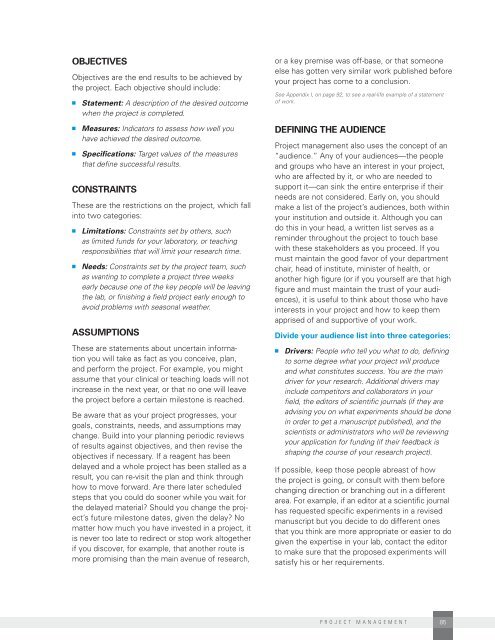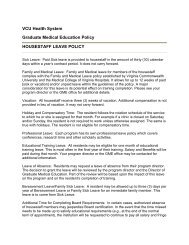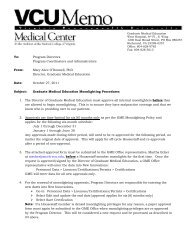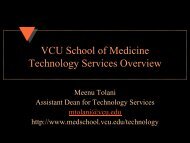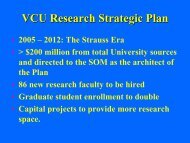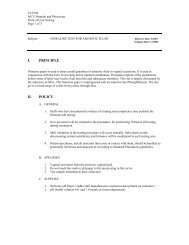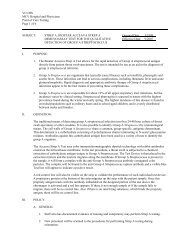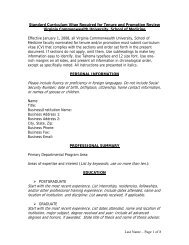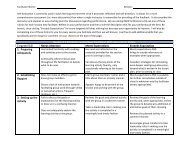Excellence Everywhere - National University of Ireland, Galway
Excellence Everywhere - National University of Ireland, Galway
Excellence Everywhere - National University of Ireland, Galway
- No tags were found...
You also want an ePaper? Increase the reach of your titles
YUMPU automatically turns print PDFs into web optimized ePapers that Google loves.
ObjectivesObjectives are the end results to be achieved bythe project. Each objective should include:n Statement: A description <strong>of</strong> the desired outcomewhen the project is completed.n Measures: Indicators to assess how well youhave achieved the desired outcome.n Specifications: Target values <strong>of</strong> the measuresthat define successful results.ConstraintsThese are the restrictions on the project, which fallinto two categories:n Limitations: Constraints set by others, suchas limited funds for your laboratory, or teachingresponsibilities that will limit your research time.n Needs: Constraints set by the project team, suchas wanting to complete a project three weeksearly because one <strong>of</strong> the key people will be leavingthe lab, or finishing a field project early enough toavoid problems with seasonal weather.AssumptionsThese are statements about uncertain informationyou will take as fact as you conceive, plan,and perform the project. For example, you mightassume that your clinical or teaching loads will notincrease in the next year, or that no one will leavethe project before a certain milestone is reached.Be aware that as your project progresses, yourgoals, constraints, needs, and assumptions maychange. Build into your planning periodic reviews<strong>of</strong> results against objectives, and then revise theobjectives if necessary. If a reagent has beendelayed and a whole project has been stalled as aresult, you can re-visit the plan and think throughhow to move forward. Are there later scheduledsteps that you could do sooner while you wait forthe delayed material? Should you change the project’sfuture milestone dates, given the delay? Nomatter how much you have invested in a project, itis never too late to redirect or stop work altogetherif you discover, for example, that another route ismore promising than the main avenue <strong>of</strong> research,or a key premise was <strong>of</strong>f-base, or that someoneelse has gotten very similar work published beforeyour project has come to a conclusion.See Appendix I, on page 92, to see a real-life example <strong>of</strong> a statement<strong>of</strong> work.Defining the AudienceProject management also uses the concept <strong>of</strong> an“audience.” Any <strong>of</strong> your audiences—the peopleand groups who have an interest in your project,who are affected by it, or who are needed tosupport it—can sink the entire enterprise if theirneeds are not considered. Early on, you shouldmake a list <strong>of</strong> the project’s audiences, both withinyour institution and outside it. Although you cando this in your head, a written list serves as areminder throughout the project to touch basewith these stakeholders as you proceed. If youmust maintain the good favor <strong>of</strong> your departmentchair, head <strong>of</strong> institute, minister <strong>of</strong> health, oranother high figure (or if you yourself are that highfigure and must maintain the trust <strong>of</strong> your audiences),it is useful to think about those who haveinterests in your project and how to keep themapprised <strong>of</strong> and supportive <strong>of</strong> your work.Divide your audience list into three categories:n Drivers: People who tell you what to do, definingto some degree what your project will produceand what constitutes success. You are the maindriver for your research. Additional drivers mayinclude competitors and collaborators in yourfield, the editors <strong>of</strong> scientific journals (if they areadvising you on what experiments should be donein order to get a manuscript published), and thescientists or administrators who will be reviewingyour application for funding (if their feedback isshaping the course <strong>of</strong> your research project).If possible, keep those people abreast <strong>of</strong> howthe project is going, or consult with them beforechanging direction or branching out in a differentarea. For example, if an editor at a scientific journalhas requested specific experiments in a revisedmanuscript but you decide to do different onesthat you think are more appropriate or easier to dogiven the expertise in your lab, contact the editorto make sure that the proposed experiments willsatisfy his or her requirements.project management85


